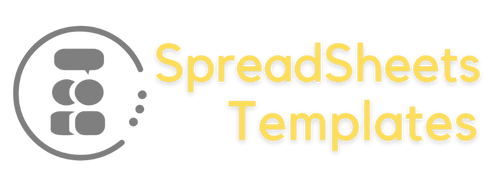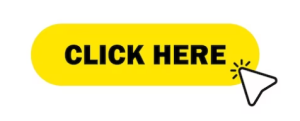Commercial Proposal Template Worksheet Leave a comment
Simplify Your Business Proposals
Introduction
In the competitive world of business, a well-crafted commercial proposal can make all the difference between sealing a deal or losing it to a rival company. To streamline this process and enhance your chances of success, utilizing a commercial proposal template worksheet can be a game-changer. In this article, we will explore the ins and outs of commercial proposal template worksheets, offering valuable insights and guidance to help you create persuasive proposals that win over clients and partners.
Table of Contents
- What is a Commercial Proposal Template Worksheet?
- Why Should You Use a Commercial Proposal Template Worksheet?
- Key Components of a Commercial Proposal Template Worksheet
- Crafting an Attention-Grabbing Title
- Introduction: Captivate Your Audience from the Start
- Problem Statement: Identifying the Client’s Pain Points
- Objective: Defining the Desired Outcome
- Methodology: Outlining Your Approach
- Deliverables: Clearly Defining What You Will Provide
- Timeline: Setting Realistic Project Milestones
- Budget: Estimating Costs and Pricing
- Team: Demonstrating Your Expertise and Capabilities
- Case Studies: Highlighting Previous Successes
- Client Testimonials: Building Trust and Credibility
- Terms and Conditions: Clarifying the Agreement
- Call to Action: Encouraging the Client to Take the Next Step
- FAQs: Addressing Common Concerns
- Commercial Proposal Template Worksheet in Action: A Step-by-Step Guide
- Frequently Asked Questions (FAQs)
- Conclusion
1. What is a Commercial Proposal Template Worksheet?
A commercial proposal template worksheet is a structured document that helps you organize and present your business proposal in a clear and concise manner. It serves as a framework for outlining your offer, describing the project scope, defining deliverables, estimating costs, and addressing the client’s needs. By using a template worksheet, you can save time and effort while ensuring that all crucial elements are included in your proposal.
2. Why Should You Use a Commercial Proposal Template Worksheet?
Using a commercial proposal template worksheet offers numerous benefits for businesses of all sizes. Here are a few compelling reasons why you should consider incorporating this tool into your proposal creation process:
- Time Efficiency: With a template worksheet, you don’t have to start from scratch every time you need to create a proposal. The pre-defined structure and sections streamline the writing process, enabling you to focus more on tailoring the content to the specific client’s needs.
- Consistency: Consistency is key in presenting your brand and business offerings. A template ensures that your proposals maintain a consistent format and style, reinforcing your professionalism and reliability.
- Comprehensiveness: A well-designed commercial proposal template worksheet prompts you to include all essential elements, leaving no crucial details overlooked. It helps you present a comprehensive and compelling proposal that addresses the client’s concerns and showcases your expertise.
- Flexibility: While using a template, you still have the flexibility to customize and personalize the content to suit each client and project. You can modify sections, add or remove details, and adapt the proposal to align with the client’s specific requirements.
3. Key Components of a Commercial Proposal Template Worksheet
A commercial proposal template worksheet typically consists of several key sections that collectively form a persuasive and informative proposal. Let’s explore these components in detail:
a. Crafting an Attention-Grabbing Title
The title of your commercial proposal sets the tone and captures the reader’s attention. It should be concise, engaging, and convey the essence of your proposal. By incorporating the keywords “Commercial Proposal Template Worksheet” in your title, you enhance its relevance and visibility in search engine results.
b. Introduction: Captivate Your Audience from the Start
In the introduction section, you have the opportunity to introduce your company, establish credibility, and express enthusiasm about the potential collaboration. Provide a brief overview of your organization, its achievements, and the value you bring to the table.
c. Problem Statement: Identifying the Client’s Pain Points
In this section, identify the challenges and pain points faced by the client. Demonstrate your understanding of their needs, highlighting the specific issues you aim to address through your proposed solution.
d. Objective: Defining the Desired Outcome
Clearly articulate the desired outcome or goal of the project. Outline the objectives you aim to achieve, emphasizing the benefits and positive impact your proposal will have on the client’s business.
e. Methodology: Outlining Your Approach
Describe the methodology or approach you will employ to tackle the client’s challenges. Explain the steps you will take, the tools or resources you will utilize, and how your expertise will be leveraged to deliver the desired results.
f. Deliverables: Clearly Defining What You Will Provide
Specify the deliverables the client can expect from your proposed solution. Break them down into clear and measurable components, ensuring that the client has a clear understanding of what they will receive upon project completion.
g. Timeline: Setting Realistic Project Milestones
Present a timeline or project schedule that outlines the key milestones and deadlines. This helps the client visualize the project’s progress and demonstrates your commitment to timely delivery.
h. Budget: Estimating Costs and Pricing
In this section, provide a detailed breakdown of the project’s costs and pricing structure. Be transparent and ensure that the client understands the value they will receive for their investment.
i. Team: Demonstrating Your Expertise and Capabilities
Introduce the members of your team who will be involved in the project. Highlight their qualifications, expertise, and relevant experience to instill confidence in the client.
j. Case Studies: Highlighting Previous Successes
Share relevant case studies or success stories that showcase your past accomplishments. Demonstrate how your solutions have positively impacted similar clients and industries, reinforcing your credibility and track record.
k. Client Testimonials: Building Trust and Credibility
Incorporate testimonials or feedback from satisfied clients. Include quotes that highlight the positive outcomes they achieved through their collaboration with your company. These testimonials serve as social proof and build trust with potential clients.
l. Terms and Conditions: Clarifying the Agreement
Outline the terms and conditions of your proposal, including payment terms, intellectual property rights, confidentiality agreements, and any other relevant contractual details. Ensure that both parties have a clear understanding of their obligations and responsibilities.
m. Call to Action: Encouraging the Client to Take the Next Step
End your proposal with a strong call to action, inviting the client to take the next step. Provide clear instructions on how to proceed, whether it’s scheduling a meeting, signing a contract, or requesting additional information.
n. FAQs: Addressing Common Concerns
FAQ 1: What should I include in the executive summary? The executive summary should provide a concise overview of your proposal, highlighting the key points and benefits. It should capture the reader’s interest and encourage them to delve deeper into your proposal.
FAQ 2: Can I customize the template worksheet to suit my specific needs? Absolutely! The template worksheet serves as a foundation, but you can customize and adapt it to meet your unique requirements. Add or remove sections, modify content, and tailor the proposal to align with the client’s expectations.
FAQ 3: How long should my commercial proposal be? While there’s no set rule, it’s best to keep your proposal concise and focused. Aim for around 5-10 pages, excluding any supporting documents or attachments. Remember, the goal is to present a clear and compelling case, not overwhelm the reader with excessive information.
FAQ 4: Can I include visual elements in my proposal? Certainly! Visual elements such as graphs, charts, infographics, and images can enhance the readability and impact of your proposal. Use them strategically to illustrate data, showcase designs, or highlight key points.
FAQ 5: Should I follow up after submitting my proposal? Yes, following up is crucial. Send a polite and professional follow-up email or make a phone call to ensure the client received the proposal and address any questions or concerns they may have. This demonstrates your dedication and commitment to their project.
FAQ 6: How can I make my commercial proposal stand out? To make your proposal stand out, focus on personalization, creativity, and addressing the client’s specific needs. Tailor the content to their industry and pain points, showcase your unique selling points, and use visual elements to make it visually appealing.
18. Commercial Proposal Template Worksheet in Action: A Step-by-Step Guide
Now that you have a comprehensive understanding of the key components of a commercial proposal template worksheet, let’s explore how to put it into action. Follow these steps to create a compelling and persuasive commercial proposal:
- Begin by understanding the client’s needs and pain points. Conduct thorough research and gather relevant information to customize your proposal.
- Start with the problem statement, clearly articulating the challenges the client is facing. Demonstrate empathy and understanding, showing that you are attuned to their specific situation.
- Define the objective of the project. Outline the desired outcome and emphasize the positive impact your solution will have on the client’s business.
- Present your methodology, explaining the step-by-step approach you will take to address the client’s challenges. Showcase your expertise and highlight the unique aspects of your solution.
- Break down the deliverables into clear and measurable components. Clearly specify what the client can expect to receive upon project completion.
- Develop a realistic timeline, setting milestones and deadlines that align with the client’s expectations. This demonstrates your commitment to timely delivery.
- Estimate the costs and pricing of the project. Provide a detailed breakdown of the expenses involved and justify the value your solution will deliver.
- Introduce the members of your team who will be involved in the project. Emphasize their qualifications, experience, and expertise to instill confidence in the client.
- Share relevant case studies and client testimonials. Highlight past successes and demonstrate how your solutions have benefited similar clients.
- Clarify the terms and conditions of the proposal, ensuring that both parties have a clear understanding of their rights and obligations.
- End with a compelling call to action, inviting the client to take the next step. Provide clear instructions on how to proceed and express your enthusiasm for the potential collaboration.
Conclusion
Crafting a persuasive and effective commercial proposal is essential for winning business opportunities. By utilizing a commercial proposal template worksheet, you can streamline the process, ensure consistency, and present a comprehensive and compelling proposal. Remember to personalize the content, address the client’s specific needs, and showcase your expertise. With the right template and approach, you can significantly enhance your chances of success in the competitive business landscape.


